One of the many wonderful aspects of living in England is the ever present history of the country. Often times golf courses are not excepted and at Yelverton a main feature of the course is one of the oldest municipal supplies of water in England. Drake’s Leat was built in 1591 to supply water from The River Meavy on Dartmoor to Plymouth. Being the rogue that Drake was and using his power as Mayor of Plymouth, he made a healthy profit of £140 on the project. The clever construction of the leat meanders for seventeen miles and ran at such a gradual pace so as to minimize erosion. Originally the leat had stone floors and walls, but eventually most of the stones were removed and used in the construction of buildings. There is an old stone barn next to the 9th tee which in all probability is evidence of this thievery. The other three main features of Yelverton are the superb use of gullies (remnants of mining works), the alpinization surrounding every green and the beautiful springy moorland turf. These four elements combined with the primordial backdrop of Dartmoor provide an interesting test which on a few occasions is nothing short of thrilling.
Herbert Fowler designed the course on commoner land known as Roborough Common which by the early 1920s was open for play. Shortly after WWII Fowler’s string of 8 through 10 was abandoned and a new finishing stretch was built. I am not nearly old enough to have enjoyed the original course, but similar to Formby’s addition of holes 7 through 10, it is hard to imagine that the present configuration is in any way inferior to the original. Yelverton’s home stretch of 16, 17 and 18 is nothing short of brilliant. These James Braid holes were designed with a keen insight as to what constitutes good and proper design principles.
The first is a gentle opener of a par 3 despite its 200 yard length. The hole does provide an idea of what is to come and fortunately is the weakest short hole of the set.

The following hole kicks up the interest considerably. The drive on this longish two-shotter is wide open until the reaching the 150 yard marker. At this point bracken and gorse squeeze the right flank, however, the hole, as is almost without exception the case, is all about the approach. One must carry broken/alps ground in which a bunker is hidden.
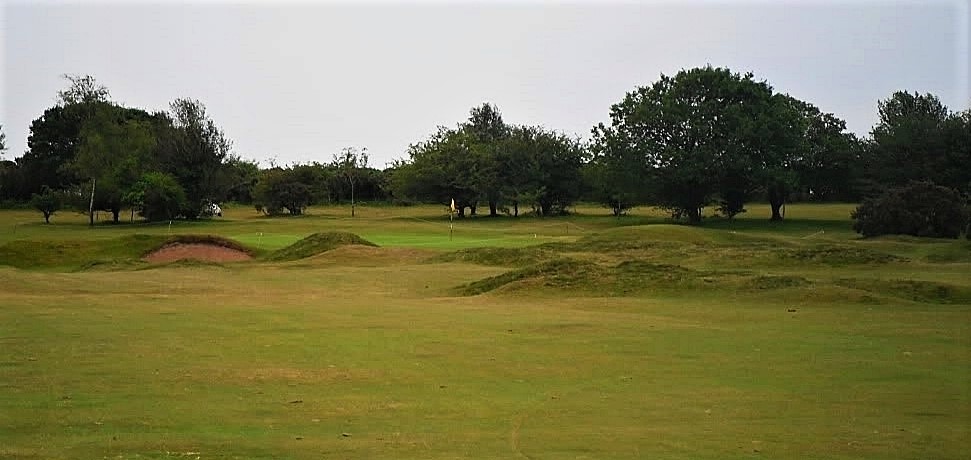
#3 is a blind par 4 measuring less than 300 yards. The green can be easily reached, but in typical Fowler fashion it runs away from the player. There is also a sentinel bunker guarding the optimal angle in from the left. The hole isn't deceptive in the least, but earning the much sought after birdie is nonetheless hard work. Below is a view from the a lay-up point some 80 yards short of the green.

Another short par 4, the fourth is within reach of the tee. The drive moves right and is somewhat obscured. It may seem like the fairways are flat, but in the photo below it is possible to make out the small ridges, rolls and cups which add zest to the game.
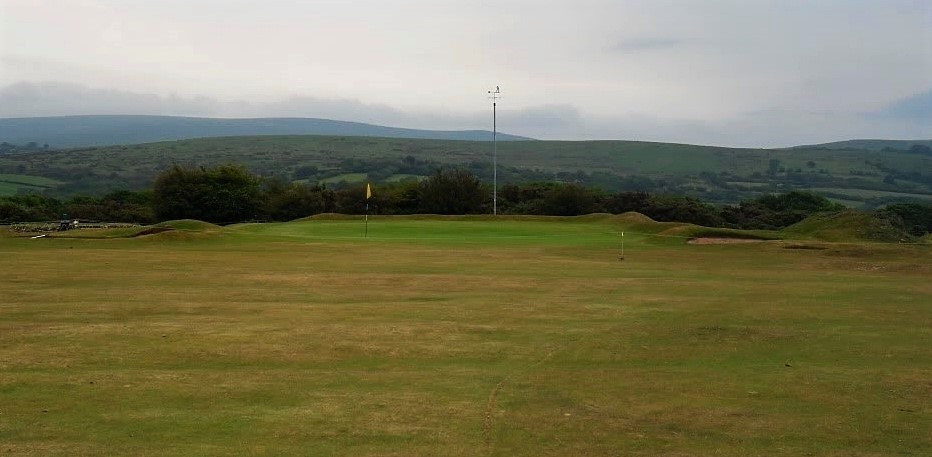
Yelverton's first par 5 is probably my favourite. The drive for this modest length three-shotter is wide open. The interest comes with the second if one can hit a long enough drive to go for the green in two. There is a low rise cops cutting across the fairway at an angle. From the fairway it looks as though there is loads of room on the right when in fact that landing area is far smaller than it would seem. The left end of the earth works is hard against the green and a hidden bunker with alpinization abruptly cuts off the right side of the putting surface. This is a clever hole using a feature which would have cost peanuts to build and maintain.


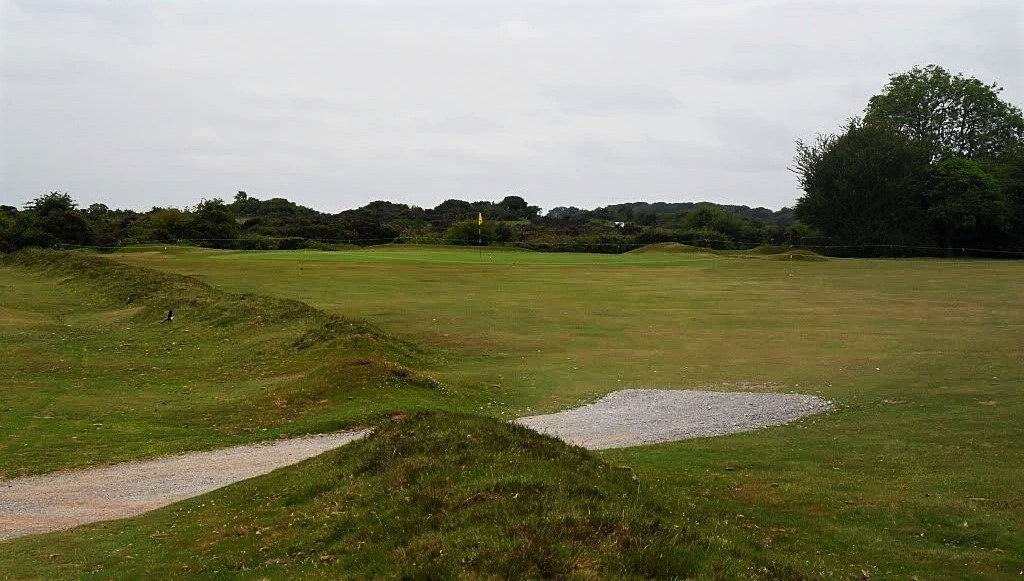
The 6th is a short hole which like the 4th, recently had a shave. The sea of gorse in front of the tee creating blindness has been eliminated to great effect. This photo was taken from well in front of the green to show the V shape of the green. The green runs to the back until hitting a ridge about 2/3s of the way to the rear. The contours also move away from the right edge of the green.
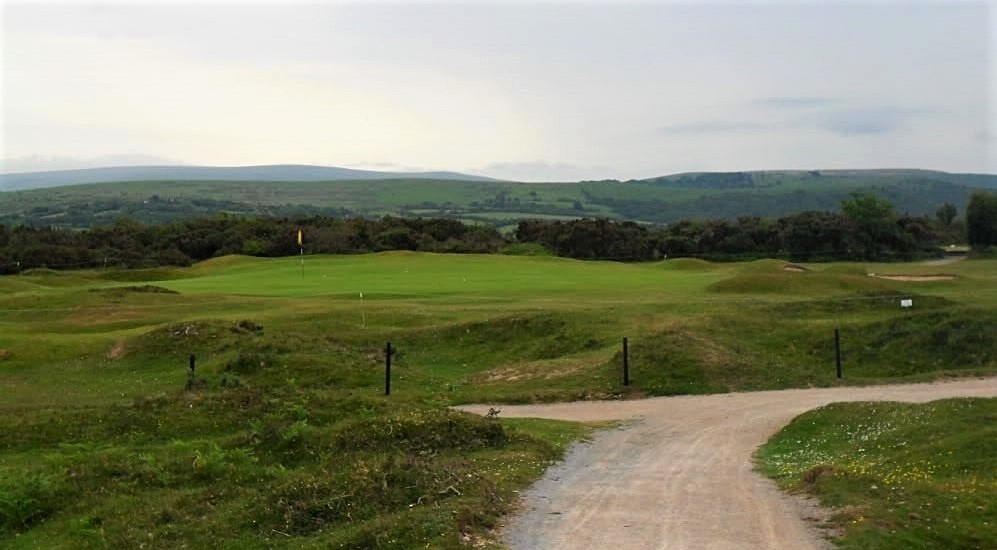
The 7th is a monster hole of 435 yards playing uphill. Not a bad hole and likely a good time for length given the shortness of the previous two par 4s, but I found this hole a bit of a slog. #8 is Fowler's original 11th and introduces Drake's Leat. Unfortunately, I didn't care much for this hole despite the captivating views of Dartmoor. This 570 yarder doesn't settle well with the previous hole as eating 1000 yards of ground in two holes rarely works.
Just when the golfer gets settled with the idea of greens moving away from the fairway Fowler throws a changeup. The 9th green is sloped back to front and because so many greens just appear flat, Fowler likely catches out 9 of 10 players. The Leat is used well as it effects the drive and the approach for this sub 300 yard hole.

The back nine begins stout with a 420 yard hole playing uphill on the approach. Once again the fairway is generous. I suspect fairway width is essential considering Yelverton is approximately 900 feet above sea level and must experience ravishes of wind to every degree any links might. Its the approach which grabs the player's attention. The green is sandwiched between lost ball country on the left and a bunker right; a very exacting approach!
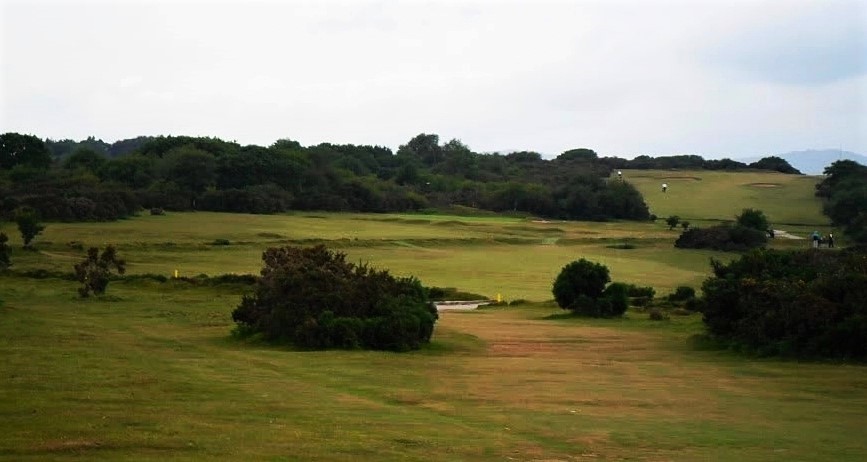

Similar to the 8th, #11 doesn't strike me as a par 5 with much interest. The best thing about the hole is it takes us near the 12 tee. This superlative hole is puzzling. There is a runway feeding to the green from the left flanked by a large hillock to the right and the ever-present alps housing sand on the left. I think the best shot is a somewhat flat mid-iron utilizing the runway. I may be wrong, but I don't think the green would have held a direct blow. A look at the green complex from the 3rd tee.
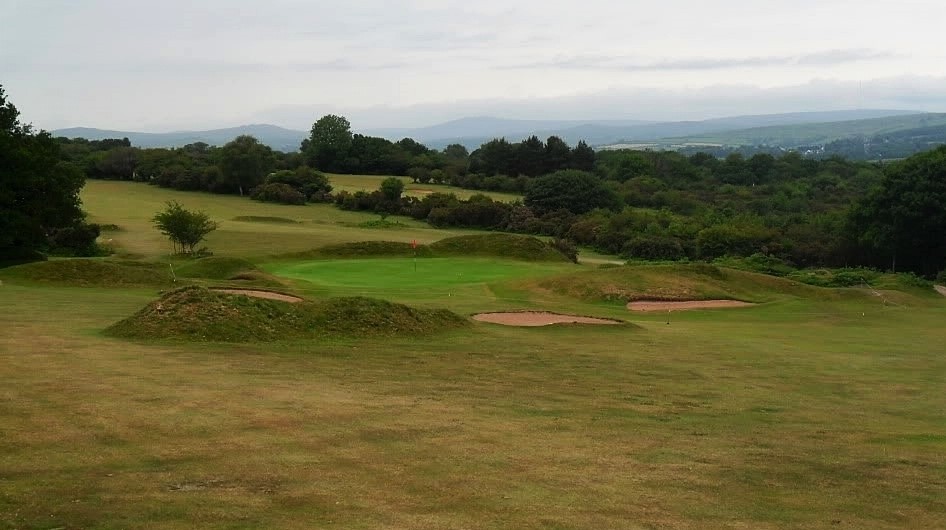
Not to be outdone by the 12th, the long par 4 13th features an approach more heroic than Prestick's Alps. The drive is merely a prelude which can greatly reward an opening of the shoulders. Any golfer who is able to reach this green in two will be jumping out of their boots in a desperate bid to smash his drive as far as humanly possible. The approach is blind and very intimitading due to broken ground being the only visible feature. Little does one know that this immense gully lies in wait. The mound on the far side of the gully is volcano bunker. I believe the mounding is the spoil from digging the gully for mining work.
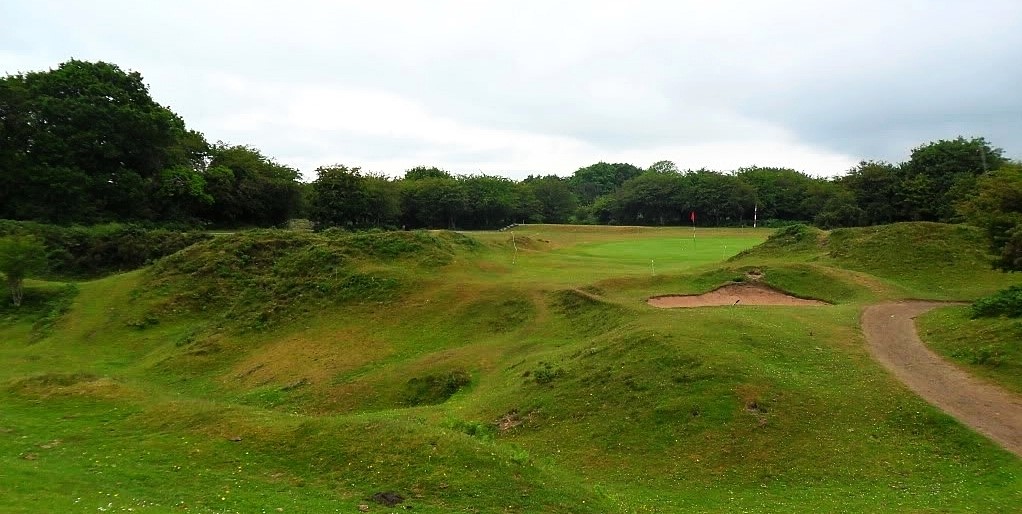
The next two holes offer a bit of respite. Both are fairly short par 4s and unusually, the 14th is very tight off the tee. The road on the left is OOB and continues down the length of the hole and directly behind the green. This isn't a great hole, but it comes at a great time in the round as two finicky shots are required.
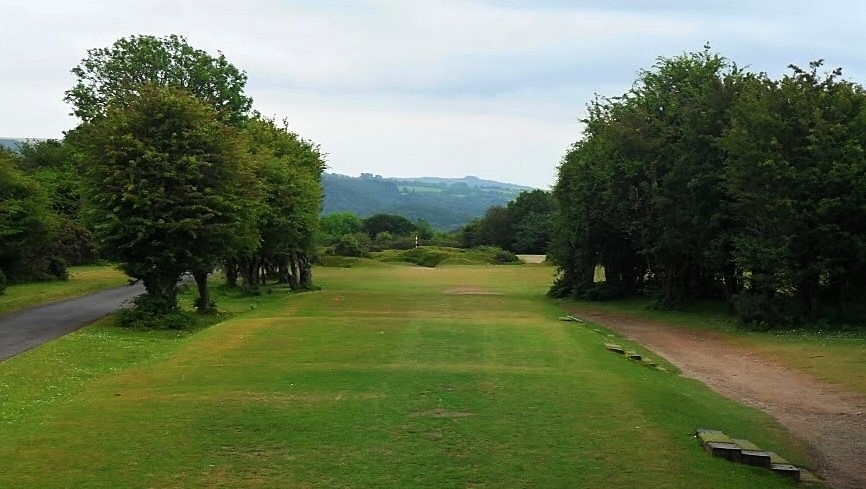
#15 (Fowler's original finishing hole) is a somewhat dull hole that strangely finishes with the most contoured green on the course. Now to what has to be one of a handful of the great finishing runs in England with the 16th as a diamond among the sapphires. This is the only hole at Yelverton in which there is shaping to the fairway and of course it comes in the form of alpinization. The hole turns fairly hard right and runs down to the alps which can't be seen from the tee and are reachable. To further complicate matters the objective of getting to the far left side of the fairway is guarded quite closely by trees. It is incredibly rare to come across a hole which is so compelling and attractive in such an absolute raw manner as is this hole.
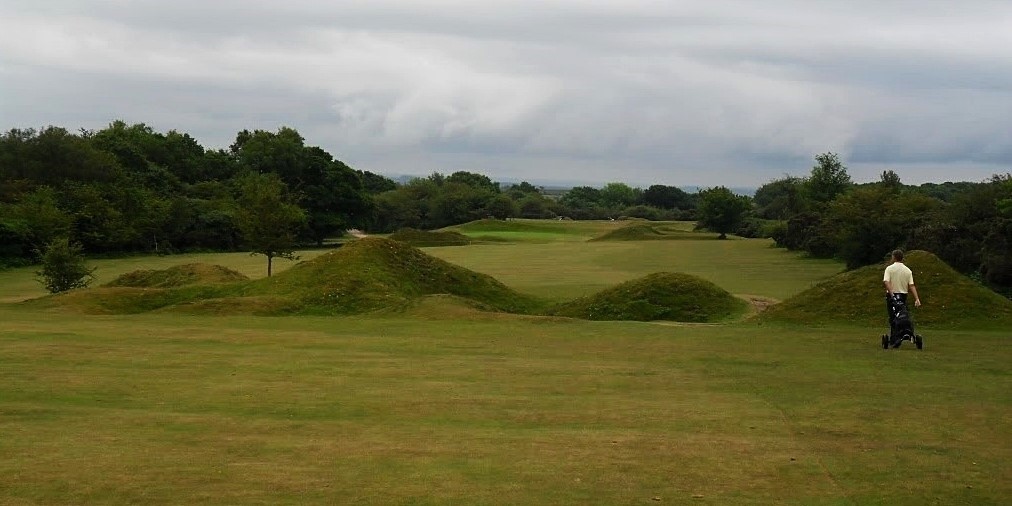
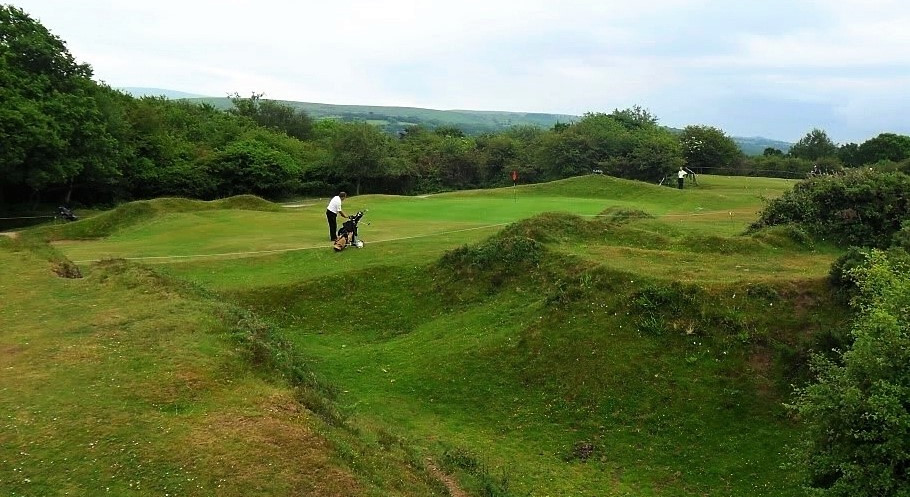
The Leat's final appearance is the finest use of the feature and provides plenty of fun and demanding accuracy befitting of a penultimate hole.

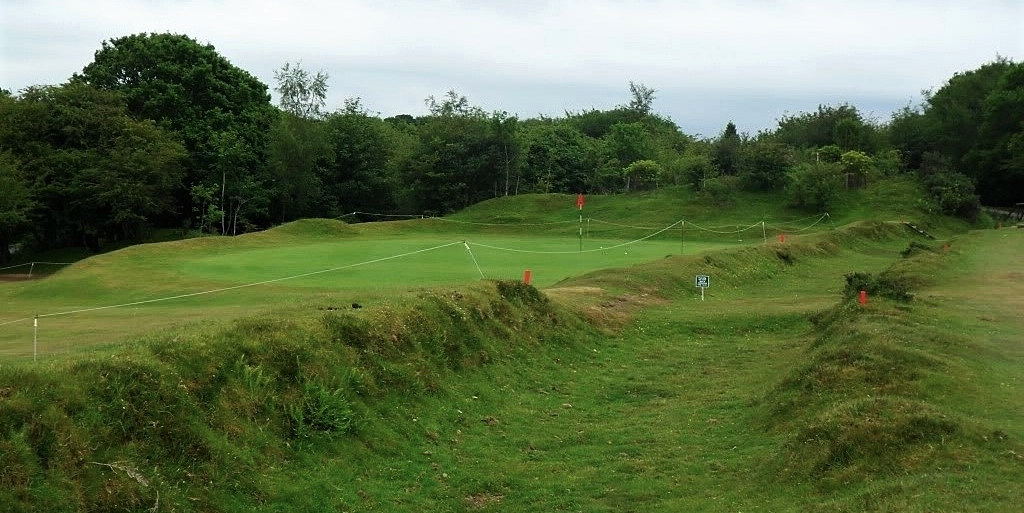
The home hole is a shortened version of the 12th. Its almost as if the architect is giving the golfer a second chance, but ratcheting the challenge down a notch. The drive is inviting, but the lay of the land feeds into the lone fairway bunker. The movement of the land is generally quite sedate at Yelverton considering the position of the course. Perhaps this is an element which would increase the interest of Yelverton. I found the approach very deceptive as I thought the mounding was in front of the green when in fact it is a backstop. Again, I think the gully and mounds are remnants of mining work.
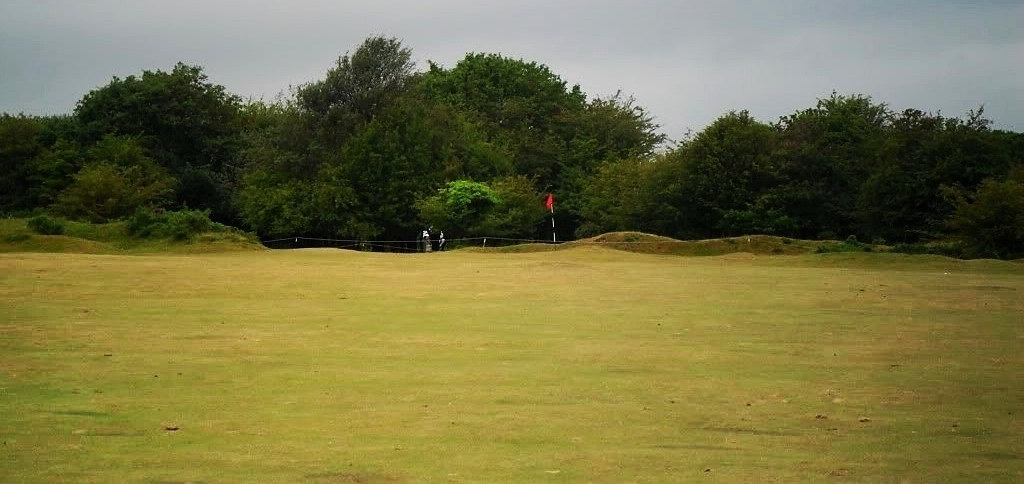
Just like #12, there is a brilliantly disguised gulley which must be traversed.
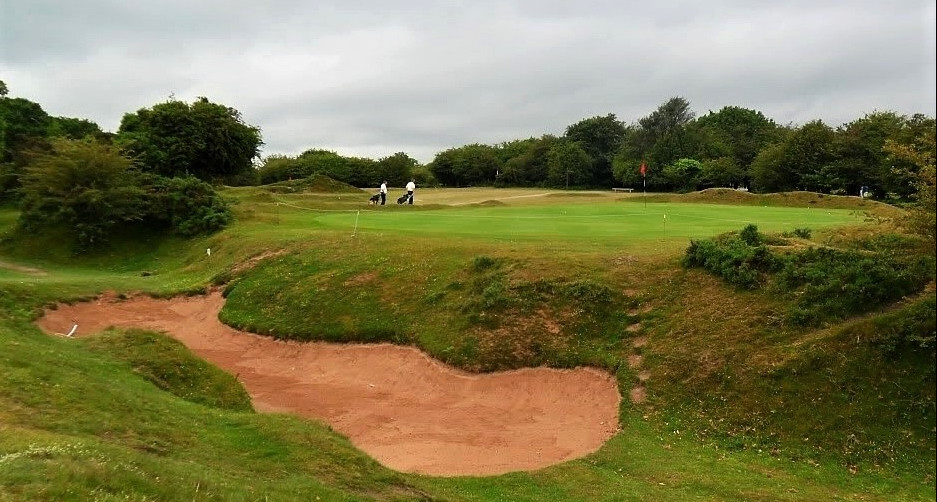
It is slightly irksome the course doesn't finish near the house and indeed the busy A386 must be re-crossed in the lengthy walk back. This same road also produces noise on several sections of the course which is at odds with the national park atmosphere. There is no doubt that Yelverton has a handful of indifferent holes, but balanced against this is at minimum an equal number of excellent holes punctuated with two wonderful par 3s and the all-world 16th (whoever the architect!) On balance, I don't think the course deserves a 1*, but subsequent plays could alter my opinion. In any case, if its not too far a drive, Yelverton is well worth the effort and in the same sort of feel good class as Reddish Vale and Church Stretton. Merely playing the 16th and taking in the views is more than fair compensation for £28 green fee. If the opportunity arises, grab Yelverton with both hands. 2011
Ciao